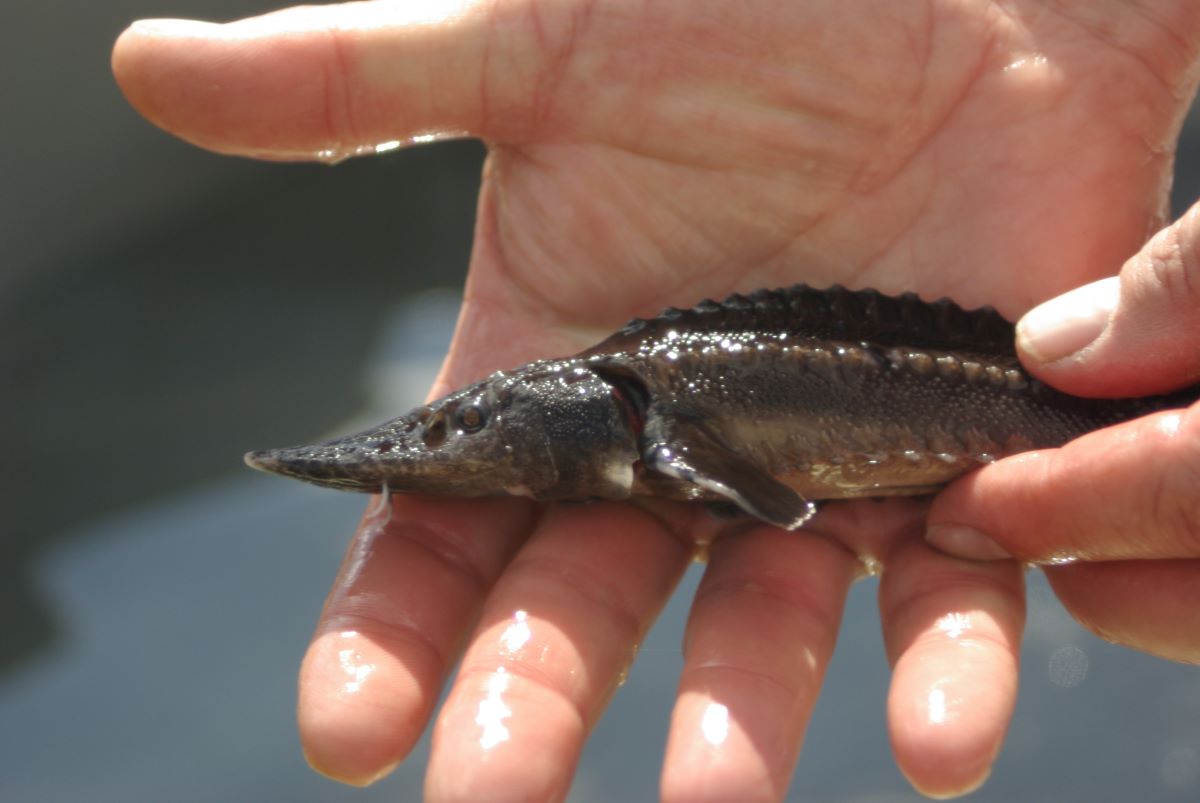The Return of the Columbia River White Sturgeon
By Jim Bailey
One of the most incredible experiences an angler can have on the Columbia River is see an 8-foot white sturgeon glide by your boat or a 300-pounder take to the air like a trout feeding on the surface.
In the BC portion of the Columbia, fishing for the endangered sturgeon is prohibited, however, an up-close encounter with the prehistoric species can happen and is common at certain times of the year.
Environment Canada designated the species as endangered according to the Species at Risk Act in 2006. BC Hydro started its recovery plan in 2000 to restore natural recruitment and bring equilibrium to the population that remains in the 56-km section from the U.S.-Canada border near Trail, north to the Hugh Keenleyside Dam and into the Arrow Lakes.
“The key overarching objectives of the aquaculture program were originally to prevent extirpation and retain the genetic diversity of the wild population.” (Mid and Lower Columbia River White Sturgeon Conservation Aquaculture Report: 2021).
Its most recent efforts have provided the best hope for the sturgeon.
Historically, studies indicate that very few of the hatchery released broodstock released between 2002-15 survived, and while spawning in the wild has been successful, only a small percentage live past one year.
The dams block access to essential spawning or foraging sites; eliminate spring flooding of traditional spawning or rearing habitats; trap nutrients on which downstream forage fish like kokanee depend; and reduce downstream turbidity, making juvenile sturgeon more visible to predators.
However, according to a 2018 BC Hydro study, the survival of hatchery-origin juveniles in this section of the Columbia River is higher than originally predicted, with recent studies estimating more than 20,000 to be at large in the population, and about 3,000 adults.
Still, the loss/destruction of habitat along with the increase in invasive species such as walleye, bass and northern pike all contribute to the sturgeon decline. Original estimates, based on the low levels of natural recruitment, suggested that the population would become functionally extinct by 2044.
Studies have shown that the increase in fine sediments associated with upstream dam construction and flow regulation is a leading factor for sturgeon decline, specifically for recently spawned larvae which rely on the interstitial spaces between rocks and gravel to hide from predators, feed on biota, and cling to for survival. (McAdam 2015).
In January, 2023, BC Hydro announced that a working group comprised of Columbia Power, Ministry of Land, Water and Resource Stewardship, Okanagan Nation Alliance, and Ktunaxa Nation Council has undertaken an effort to restore white sturgeon spawning habitat at the Arrow Lake Generating Station, below the Hugh Keenleyside Dam.
The group will create a spawning bed made of a mix of rocks and gravel at the site to improve the substrate for incubating eggs and larvae, provide protection from predators and keep the larvae and eggs from being swept away by flows in the tailrace of the Arrow Lake Generating Station during a critical period in their life stage.
In addition, BC Hydro alongside BC Freshwater Fisheries Society have been retrieving wild larvae and eggs from spawning grounds near Waneta Dam, and other known spawning beds, and reintroducing them to a Streamside Incubation Facility located south of Trail.
The larvae and eggs are recovered from egg mats and drift nets previously set at key spawning areas, then taken and placed into the incubation facility.
The streamside rearing facility is a 14 by 8-foot cargo trailer with plumbing that pumps water from the river through a series of upweller jars that spill into a single trough with five separate dividers to capture and segregate eggs and embryos from separate spawning events on the river.
The troughs’ artificial spawning beds filter out the sediment to mimic ideal spawning conditions in the wild. The larvae are transported to the Kootenay Sturgeon Hatchery on the Bull River near Cranbrook within seven days to rear.
The first 21 days are the most critical for sturgeon, whose growth is rapid in the first 50 days. Once the sturgeon reach about 200 grams, they are considered ready for reintroduction to the Columbia, each fitted with a PIT tag and the removal of a few scutes (boney extrusions) near the tail so biologists and fishery technicians can readily identify as wild or hatchery sturgeon.
Analysis shows that the larger the wild juvenile sturgeon size at release, the better chance of survival. The sturgeon’s chance of survival increases significantly, more than 85 per cent, for those greater than 200-g released in the Columbia River below Hugh Keenleyside Dam (HLK), and 300g for fish released above HLK into Arrow Lakes (Mid Columbia River).
Also, the number of sturgeons released each year will not exceed 200, a big difference compared to the 4,000 released every summer in the early years of the program.
The program’s change to rearing sturgeon bred in the wild has also significantly increased the genetic diversity of the released juveniles since the earlier days using broodstock.
With the restoration of white sturgeon spawning habitat at the Arrow Lake Generating Station, combined with the ingenuity and success of recovering wild sturgeon at the Streamside Incubation Facility, the adaptive methodology just may prove a benefit for conservation and the survival of the Columbia River white sturgeon.






